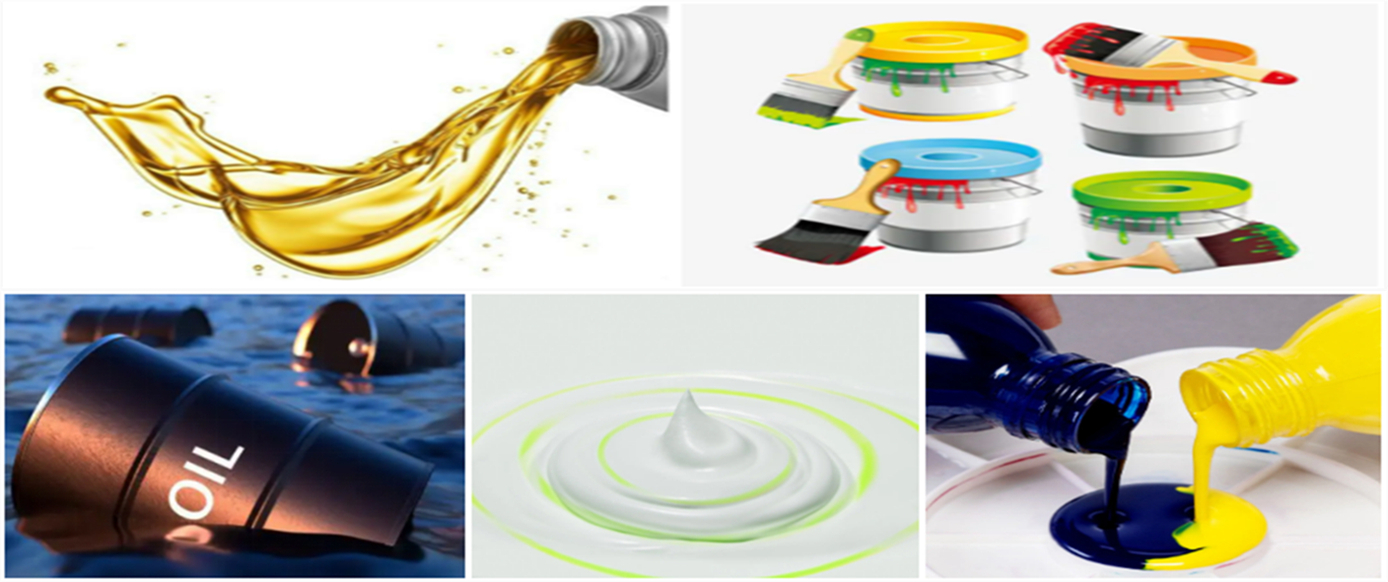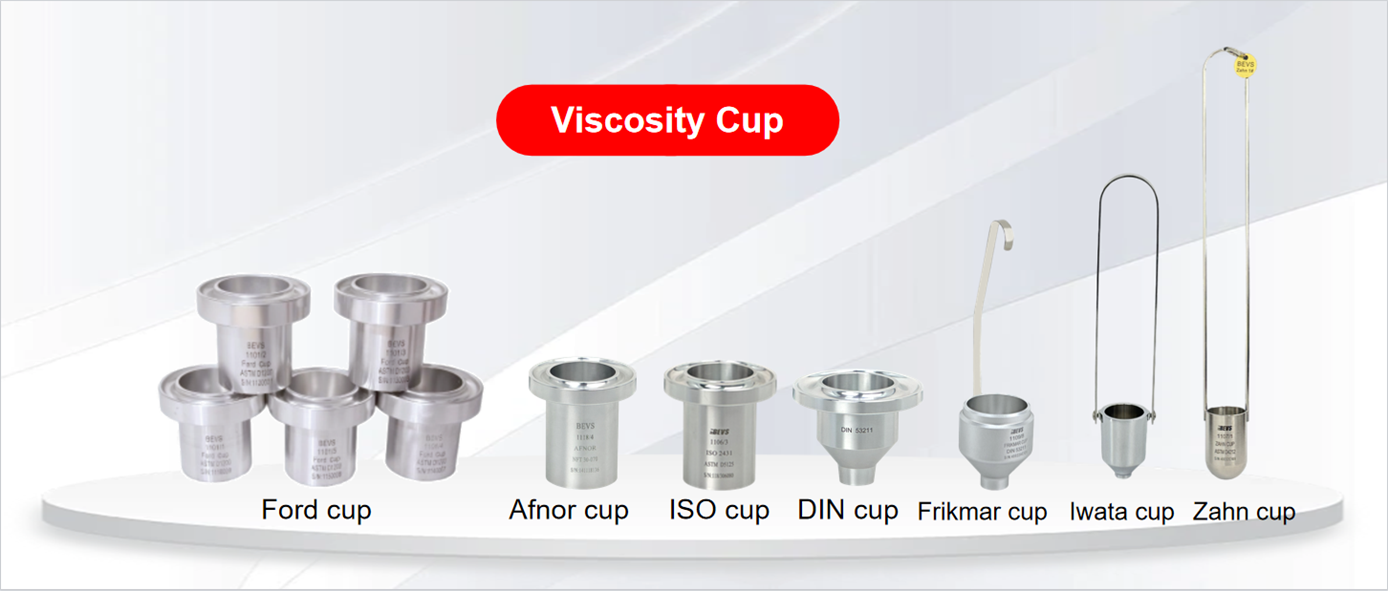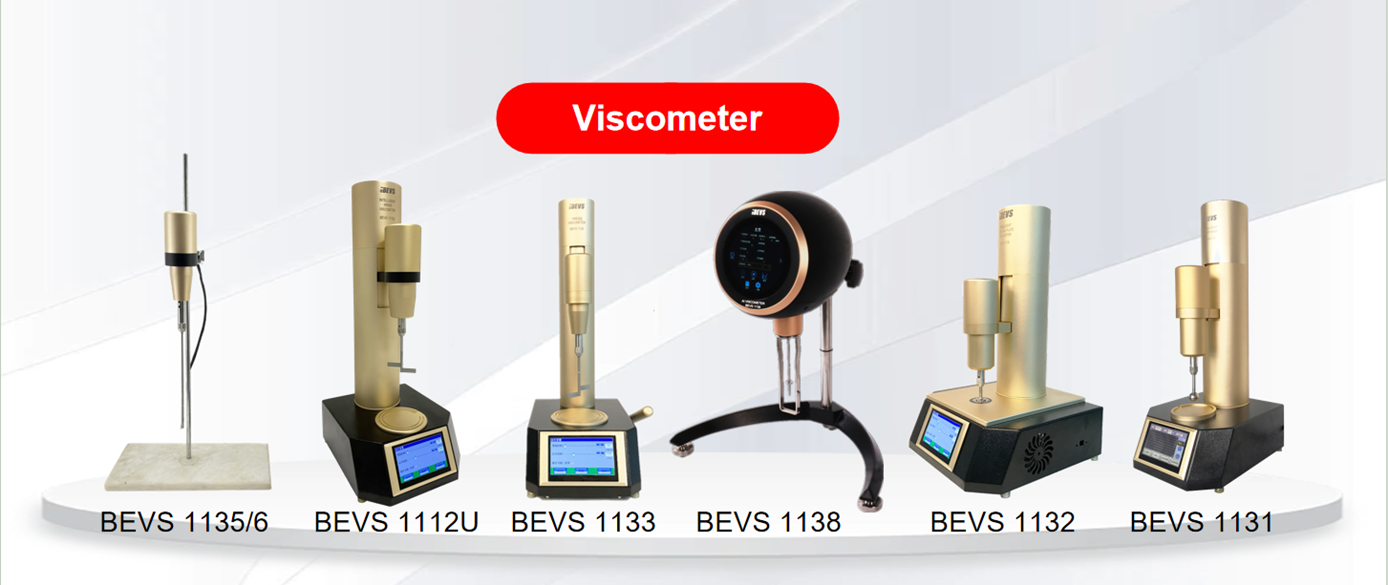People understand that fluids encounter resistance during motion, leading to the loss of mechanical energy. But how significant is this resistance, and what factors influence it? Typically, this resistance is described as the internal friction of the fluid—its viscosity.
The Importance of Viscosity in Daily Life and Industrial Production
From everyday items like cooking oils and cosmetics to industrial sectors such as crude oil extraction, chemical production, light industry, construction materials, coal, metallurgy, transportation, national defense, aerospace, and various other sectors of the national economy, viscosity plays a crucial role. In daily life, we often encounter paints or coatings, such as on the beautiful exterior of cars, the walls of buildings, furniture, and appliances. Liquid coatings must go through the fluid stage during storage, transportation, and application. Their rheological properties are an important indicator that affects their performance.
Classification and Characterization of Fluids
To obtain accurate measurement results, it is important to understand the rheological properties of the product:
- Newtonian Fluids (e.g., water):
These liquids have a viscosity that does not change with variations in shear rate, meaning the viscosity remains the same at any speed. Only temperature affects the viscosity, with a 1°C change in temperature causing a 10% change in viscosity.
- Time-Independent Non-Newtonian Fluids:
Under a certain shear rate and temperature, the viscosity readings remain constant. When the sample is subjected to a constant shear rate, the viscosity does not change over time. However, changing the shear rate will affect the viscosity.
a. Shear-thinning, pseudoplastic behavior (e.g., paints, shampoos): Higher shear rates lead to a decrease in viscosity.
b. Shear-thickening, dilatant behavior (e.g., starch dispersions): Higher shear rates lead to an increase in viscosity.
- Time-dependent Fluids:
Even under a constant shear rate and temperature, the fluid’s viscosity changes throughout the process.
a. Thixotropy (e.g., ketchup, pastes, creams): The viscosity decreases over time under shear.
b. Rheopectic behavior (e.g., latex emulsions, surfactants): The viscosity increases over time under shear.
Note that high shear rates can also cause an increase in the sample's temperature, which may be mistakenly interpreted as a time-dependent fluid.
Additionally, vortex flow can lead to erroneous high viscosity readings due to the excessive speed.
Fluid Measurement Methods
1. Viscosity Cup
Among the many instruments used for measuring viscosity, the most economical, practical, and easy-to-operate is the outflow-type viscometer, widely used in the coating industry. The viscosity cup's design is an adaptation and enlargement of the capillary viscometer, with a wide range of models available globally, though they are not standardized. Examples include the Ford Cup and Saybolt Viscometer (USA), DIN Cup and Engler Viscometer (Germany), Afnor Cup and Barbey Viscometer (France), BS Cup and Redwood Viscometer (UK), as well as Zahn Cup and Shell Cup, among others. The International Organization for Standardization (ISO) recommends the ISO outflow cup. The outflow-type viscometer uses the gravity of the sample itself to produce flow, and the flow time of a specific amount of sample at a certain temperature is typically used to express viscosity, measured in seconds. Based on the operating principle, the outflow time (in seconds) can be converted into kinematic viscosity (mm²/s) through a characteristic curve.
2. Viscometer
►Operating Process
The BEVS 1133 Intelligent Krebs Viscometer (Stormer Viscometer) developed by BEVS comes with a motor that drives at a fixed speed of 200 rpm, completely replacing the traditional weights used in older viscometers. This type of viscometer can also directly display the paint viscosity in units such as grams or centipoise (cP), which greatly improves measurement accuracy, repeatability, and the ability to meet the varying testing needs of customers.
Common Issues and Solutions in Daily Use:
How to select a suitable and accurate viscometer?
1. First, the performance specifications of the instrument must meet the requirements of national metrological verification standards.
2. Second, the instrument in use should undergo periodic calibration.
3. Third, when necessary (e.g., the instrument is used frequently or is at the threshold of qualification), an intermediate self-check should be performed to confirm its metrological performance is within acceptable limits.
4. Finally, ensure that the coefficient error is within the allowed range; otherwise, accurate data cannot be obtained.
How to obtain accurate viscosity measurement results by controlling key data?
Pay attention to the following technical information to ensure that these data are correct and compatible. This will help users obtain accurate measurement results:
1. Viscosity meter model;
2. Spindle type;
3. Accessories (such as sample adapters, low-viscosity adapters, spiral drive devices, if used);
4. Speed;
5. Volume or size of the sample container;
6. Sample temperature;
7. Whether a spindle guard is used.
Finally, it is important to note that measurements should only be compared under the same conditions, so knowing these details is crucial.
How to choose a sample container?
The inner diameter of the sample container should be 83 mm or larger. A 600 mL beaker is typically used.
How to choose the spindle and speed?
Use the specified spindle and speed according to the existing technical parameters or procedure, and ensure the correct selection of the viscometer. Choose the best spindle/speed combination to avoid errors. The following points should be considered:
1. The torque reading should be between 15% and 95% of the full scale;
2. If the reading exceeds 100%, the viscometer will display an error message with an alarm sound. In this case, select a slower speed and/or a smaller spindle;
3. If the reading is below 15% of the full scale, the viscometer will display an error message with an alarm sound. In this case, select a higher speed and/or a larger spindle;
4. If the approximate viscosity of the sample is known (i.e., the viscosity is already known), you can choose the correct combination according to the spindle and speed reference chart;
5. When performing multiple tests, use the same spindle/speed combination for all tests.
How to prepare the sample?
The following preparation considerations should be observed:
1. The sample should be free of air bubbles. Lightly shake the container or use a vacuum device to remove bubbles.
2. The sample temperature should be constant and uniform. After immersing the correct spindle and guard into the sample, wait until the sample reaches the same temperature. For example, if using a 600 mL beaker, it is recommended to wait at least 30 minutes before measuring.
3. The sample concentration must be uniform. This is especially important for two-component samples (such as emulsions).
4. The sample being tested should not undergo any chemical or physical changes during the testing process.
What is the impact of instrument leveling on test accuracy?
Most instruments need to be leveled. After changing the spindle and adjusting the spindle height, and throughout the measurement process, attention should be paid to the leveling. Failure to do so may cause reading deviations or even make the measurement impossible.
How to clean the spindle?
The spindle used for measurement (including the guard) should be clean and free of contaminants. It should be cleaned promptly after measurement, especially after testing paints or adhesives. Careful attention should be paid to the cleaning method; appropriate organic solvents can be used for soaking. Avoid using metal tools or hard scrapers, as severe scratches on the spindle surface can cause measurement deviations.
How does fluid performance affect test results?
It is important to determine whether the fluid is a Newtonian fluid. For non-Newtonian fluids, the spindle, speed, and rotation time should be selected accordingly to avoid mistakenly attributing measurement errors to instrument inaccuracy.
The key to successful fluid viscosity testing lies in selecting the most suitable measurement tool according to the testing objectives and requirements. Whether it's for routine quality control or research and development, laboratory testing or on-site testing, and whether precise viscosity values are needed or only whether the fluid meets process requirements. Once the actual needs are clear, the preparatory work for the test can be completed quickly, and the right tools can be selected to help obtain accurate test data and achieve the set goals.





















